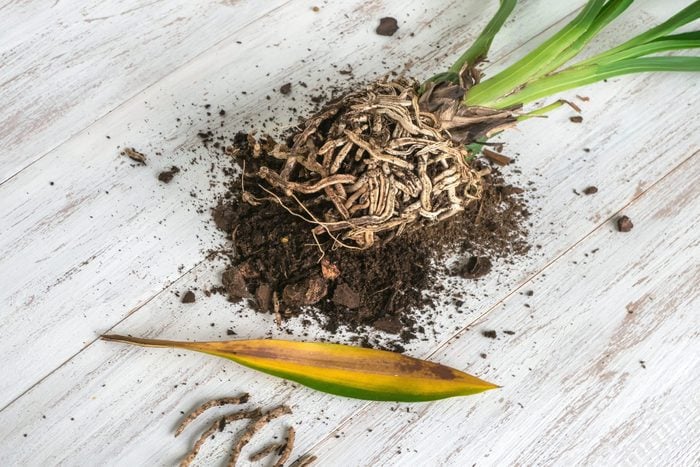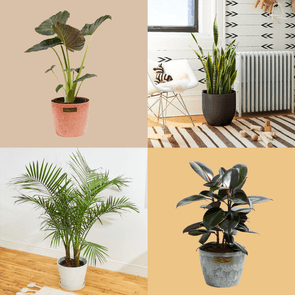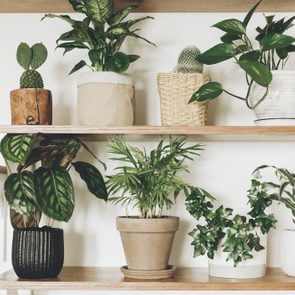What Is Root Rot, and How to Care for It
Updated: Jan. 03, 2023

Root rot, the leading cause of houseplant death, is far easier to prevent than cure
If your favorite houseplant wilts and drops its leaves, it may be suffering from root rot. One of the most common causes of a dead plant, root rot occurs when a plant has been given too much water. Surprisingly, the symptoms of overwatering and underwatering indoor plants are similar, but they call for different solutions. You can distinguish between the two conditions by examining the roots of your unhealthy plant.
Even low-maintenance indoor plants like snake plants can develop root rot. Most often, the condition is fatal. But when caught early, root rot might be treatable, according to Byron Martin, co-owner of Logee’s Greenhouses, a mail-order and on-site retail plant nursery in Danielson, CT. Preventive measures are much more effective, and they require mastering the art of plant watering.
What is root rot?
Root rot is caused by several fungal and related disease-causing organisms (but not fungus balls) that enter a plant’s roots. “These pathogens gain a foothold when roots are in water-soaked conditions,” Martin says. Potting soil can become too wet if you:
- Water a plant too often
- Let water sit in a saucer under the plant pot
- Use a pot without drainage holes so water collects in the bottom
- Put a plant in too big a pot (water will drain too slowly)
- Pot the plant with outdoor garden soil that will become thick and prevent water from draining out of the container
Winter is a risky time for plant roots. “Houseplants grow less in the winter,” says Dave Clement, a plant pathologist with the University of Maryland Extension. But people tend to not reduce their watering during the cold months, so the potting mix may stay wet. The plants may also be exposed to temperatures below their comfort zones. “Cold and wet is an invitation to root rot,” Martin says. If you have fungus gnats, then you have conditions conducive to root rot.
Regardless of the time of year, some indoor plants are especially susceptible to root rot, including dwarf citrus trees, poinsettias and gardenias, according to Martin.
Signs of root rot
What does root rot look like? The first symptom is stunted growth—the houseplant appears not to thrive. As the disease progresses, the plant wilts from the bottom leaves up. Finally, leaves turn yellow and drop off.
Because the symptoms of underwatering and root rot are similar, it’s important to get the correct diagnosis before you do anything to help your ailing plant. “Take the plant out of its pot and look at the roots. Roots should be white and firm, not mushy. Roots with rot are black and may smell bad,” says Lisa Eldred Steinkopf, aka “The Houseplant Guru,” a blogger, lecturer and author of Houseplants: The Complete Guide to Choosing, Growing, and Caring for Indoor Plants. The roots of underwatered plants will look healthier.
Root rot treatment
If your stressed plant appears to have some intact roots, follow these steps from Steinkopf on how to fix root rot:
- Take the plant out of the pot.
- Wash all soil off the root ball.
- Sanitize the pot with one part bleach to 10 parts water. Also sanitize any tools, such as trowels, that you plan to use.
- Put the plant in the sanitized pot with new potting soil. Here’s how to repot a plant.
- Water the plant to settle it into the pot.
- Do NOT fertilize the plant until it appears to have recovered.
How to prevent root rot
Preventing root rot is much, much easier than trying to cure it with root rot treatment. The key to fending off the disease is to keep your houseplants properly hydrated. Instead of following a regular plant watering schedule, check that each plant needs water by sticking your finger in the pot. “For most plants, if the top two inches are dry, the plant could use a drink,” Steinkopf says.
Use a soil mix intended for containers. It includes particles to maintain air spaces that allow roots to breathe. In addition, “Terra cotta pots will help keep root rot at bay,” Martin says. Because they are porous, moisture escapes through their walls, which cuts down the odds of developing soggy soil.
Make sure you do not overfertilize your plants, cautions Clement. The additional nitrogen in fertilizers suppresses a plant’s ability to fight off diseases. Also, fertilizers add salt to the potting soil, and this can damage root tips, making it easy for pathogens to infect the plant.
Clement suggests that each spring you knock your plants out of their containers and inspect their roots. This gives you a chance to catch root rot early. “And if you remove dead roots, you can stimulate new growth,” he says.
Sources:
- Byron Martin, co-owner of Logee’s Greenhouses
- Dave Clement, plant pathologist with the University of Maryland Extension
- Lisa Eldred Steinkopf, blogger, lecturer and author of Houseplants: The Complete Guide to Choosing, Growing, and Caring for Indoor Plants
- Iowa State University Extension and Outreach: “Root Rots of Houseplants”
- Purdue Extension: “Pythium root rot of herbaceous plants”



